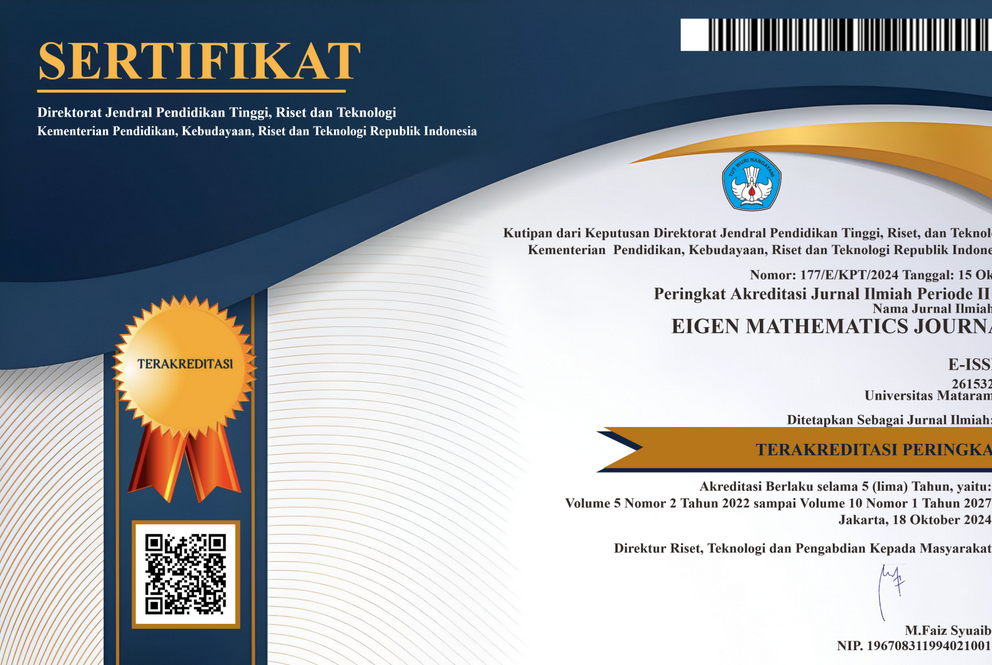Analysis of Bottled Water Quality Control Using the FMEA Method and the Application of Kaizen (Case Study at PT. Lombok Pusaka Adam, Jelantik, Central Lombok)
DOI:
https://doi.org/10.29303/emj.v5i1.126Abstract
Clean water is one of the basic needs with unlimited use, even in the economic field. The opportunities provided can be utilized by companies that produce bottled drinking water. The existence of defective products is obtained in production so that the need for quality analysis of the product is still within the control limits on the P chart. This is done by knowing the highest value in the influential failure mode. So that suggestions for improvement with Kaizen can be given. Based on the control P chart obtained, all points of defective products in the production process are within control limits with a UCL limit of 0.00804 and an LCL limit of 0.00602. This indicates that the defective product is statistically controlled. The Failure Mode and Effect Analysis (FMEA) method assigns a priority value to each failure mode, and the value is the Risk Priority Number (RPN). The biggest RPN is that the cover does not stick to the surface of the cup, with an RPN value of 240. The proposed improvement using the Kaizen method is to increase inspections and routine repairs on the machine.References
Alisjahbana, J. (2005). Evaluasi Pengendalian Kualitas Total Produk Pakaian Wanita Pada Perusahaan Konveksi, 8(1).
Arif, M. S., Chauliah, F. P., & Ngudi, T. (2018). Peningkatan Grade Kain sarung dengan Mengurangi Cacat Menggunakan Metode Kaizen dan Siklus PDCA pada PT. X, 26(2), 222-231.
Fatkhurrohman, A., & Subawa, S. (2016). Penerapan Kaizen Dalam Meningkatkan Efisiensi Dan Kualitas Produk Pada Bagian Banbury PT Bridgestone Tire Indonesia. Jurnal Administrasi Kantor, 4(1), 14-31.
Gunawan (2014). Implementasi Pengendalian Kualitas Dengan Statistic Pada Proses Produksi Bayi do PT.Dewi Murni Solo, 3(2), 1-14.
Marimin (2004). Teknik dan Aplikasi Pengambilan Keputusan Kriteria Majemuk.Jakarta : Grasindo.
Montgomery, D. C. (1990). Pengantar pengendalian kualitas statistik, Yogyakarta: Gadjah Mada University Press.
Refangga, M. A., Gusminto, E. B., & Musmedi, D. P. (2018). Analisis Pengendalian Kualitas Produk Air Minum Dalam Kemasan dengan Menggunakan Statistical Process Control (SPC) dan Kaizen Pada PT. Tujuh Impian Bersama Kabupaten Jember. e-Journal Ekonomi Bisnis dan Akuntansi, 5(2), 164-171.
Sari, D. P., Marpaung, K. F., Calvin, T., Mellysa, M., & Handayani, N. U. (2018).Analisis Penyebab Cacat Menggunakan Metode FMEA dan FTA pada Departemen Final Sanding PT. Ebako Nusantara. Prosiding SNST Fakultas Teknik, 1(1).
Susantyo, J., & Winarni., & Catur, H. (2011). Aplikasi Six Sigma DMAIC dan Kaizen Sebagai Metode Pengendalian dan Perbaikan Kualitas Produk, 4(1), 61-53.
Wijaya, Toni (2011). Manajemen Kualitas Jasa. Jakarta : PT.Indeks Kembangan.
Downloads
Published
How to Cite
Issue
Section
License

This work is licensed under a Creative Commons Attribution-NonCommercial-ShareAlike 4.0 International License.
All articles published in the Eigen Mathematics Journal will be available for free reading and downloading. The license applied to this journal is Creative Commons Attribution-Non-Commercial-Share Alike (CC BY-NC-SA).
Similar Articles
- Baiq Siti Patimah Zohrah, Syamsul Bahri, Zulhan Widya Baskara, Forecasting Non-Metal and Rock Mineral (MBLB) Tax Revenue Using the Fuzzy Time Series Markov Chain Method in East Lombok Regency , EIGEN MATHEMATICS JOURNAL: Vol. 7 No. 1 (2024): June
You may also start an advanced similarity search for this article.
Most read articles by the same author(s)
- Rifdah Fadhilah, Lisa Harsyiah, Nuzla Af’idatur Robbaniyyah, The Decision on Selecting the Best Laptop Using Analytical Hierarchy Process and Simple Additive Weighting Method at the Faculty of MIPA University of Mataram , EIGEN MATHEMATICS JOURNAL: Vol. 7 No. 2 (2024): December
- Ena Setiawana, Nurul Fitriyani, Lisa Harsyiah, Modeling the Open Unemployment Rate in Indonesia Using Panel Data Regression Analysis , EIGEN MATHEMATICS JOURNAL: Vol. 7 No. 1 (2024): June
- Zulhan Widya Baskara, Lisa Harsyiah, Dewa Nyoman Adi Paramartha, Qabul Dinanta Utama, Factor Analysis for Mapping Characteristics in Robusta Coffee Decaffeination Experiments , EIGEN MATHEMATICS JOURNAL: Vol. 5 No. 1 Juni 2022
- Sulpaiyah Sulpaiyah, Syamsul Bahri, Lisa Harsyiah, Forecasting Rice Price with Double Exponential Smoothing and Fuzzy Time Series Methods (Case Study: Price of Rice in Mataram City) , EIGEN MATHEMATICS JOURNAL: Vol. 5 No. 2 Desember 2022
- Lisa Harsyiah, Nurul Fitriyani, Salwa Salwa, Peramalan Jumlah Siswa Baru Madrasah Aliyah (MA) Manhalul Ma’arif Darek-Lombok Tengah , EIGEN MATHEMATICS JOURNAL: VOL. 3 NO. 2 DESEMBER 2020
- Vidya Atika Ramdani, Emmy Dyah Sulistyowati, Lisa Harsyiah, Comparative Analysis of the Graduates Quality of the Mathematics Study Program at the University of Mataram Using the Multivariate Exponentially Weighted Moving Average (MEWMA) Control Chart with T^2 Hotelling , EIGEN MATHEMATICS JOURNAL: Vol. 6 No. 1 Juni 2023
- Lisa Harsyiah, Zulhan Widya Baskara, Dina Eka Putri, Rifdah Fadhilah, Analysis of Factors that Influence Poverty in West Nusa Tenggara Using Principal Component Regression , EIGEN MATHEMATICS JOURNAL: Vol. 8 No. 1 (2025): June






